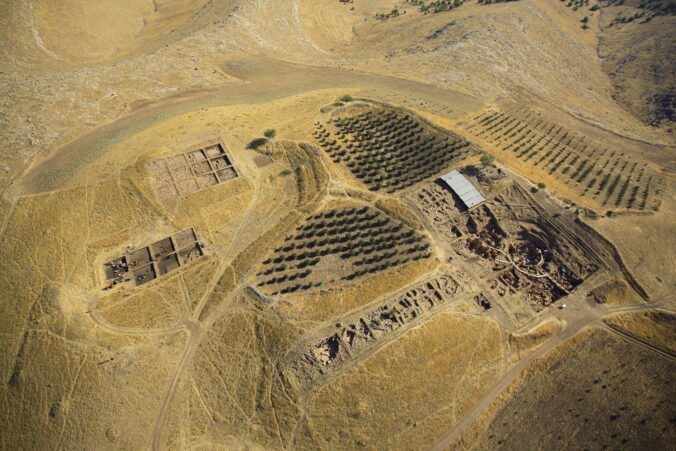The year 2020 marked a quarter of a century since the beginning of archaeological excavations at Göbekli Tepe. Unfortunately, due to the pandemic, this anniversary was somewhat forgotten. Reason enough for us to briefly summarise the story behind the now 28 years of research at this famous site.
Initially identified as a prehistoric site in 1963 in the frame of a Turkish-American archaeological survey project, Göbekli Tepe was more or less forgotten for over thirty years, attention turning instead to the site of Çayönü Tepesi (Ergani/Diyarbakır) discovered during the same survey. In the interim years, excavations at Çayönü and other sites, including Cafer Höyük, Hallan Çemi and Nevalı Çori, revealed much more about the transition from hunter-gatherer to sedentary societies.
The story behind the re-discovery of Göbekli Tepe has meanwhile entered the realms of modern archaeological myth. Although synonymous with the name Klaus Schmidt, a German archaeologist who dedicated much of his career to Early Neolithic research in Southeast Turkey, the re-discovery of Göbekli Tepe in 1994 takes pride of place in the accounts of the local community from Örencik, a village located just two kilometres west of the site. Unaware of the outstanding role that the mound would one day play in Neolithic research, the local families considered their finds – made during ploughing and field-boundary wall construction – important enough to report them to the nearby Sanliurfa Museum. Additionally, the fact that Schmidt was guided to the mound by a local farmer (Ş. Yıldız) after enquiring about flint surface scatters is clear evidence of this local knowledge.
It goes without saying that the infrastructure that we see today at Göbekli Tepe, which allows hundreds of visitors to pass through its gates every day, was inconceivable to Klaus Schmidt and his companions at the time of their initial visits in October 1994. Access to the site was only possible by foot from the outskirts of Örencik village; the modern asphalt roads now leading to the site either did not exist or were still mere dirt tracks.
In 1995, fieldwork began at Göbekli Tepe under the auspices of the Şanlıurfa Museum (Adnan Mısır), with Harald Hauptmann (German Archaeological Institute) as acting site director. From the very beginning, fieldwork was coordinated by Klaus Schmidt, who, following Hauptmann’s retirement, became director of excavations in 2006 until he passed away in 2014. The directorship of excavations passed to the Şanlıurfa Museum with Lee Clare as field director and coordinator of DAI/DFG research activities. In 2019, Necmi Karul became the new director of the “Göbekli Tepe Culture and Karahantepe Excavation” Project. Archaeological research by the DAI continues unabated and is coordinated and supervised by Lee Clare (DAI Istanbul).
Since 2010, research at Göbekli Tepe has been generously supported by the DFG (German Research Foundation) in the frame of a long-term research project, “The Prehistoric societies of Upper Mesopotamia and their subsistence”. At present, this international and interdisciplinary project is being undertaken by the German Archaeological Institute (Orient and Istanbul Departments), the Ludwig Maximilian Universität München (Archaeozoology) and the Freie Universität Berlin (Geography) in cooperation with the University of Cologne (Institute of Prehistoric Archaeology) and the Istanbul University (Arkeoloji Bölümü).
In over 28 years, many colleagues have contributed to our understanding of Göbekli Tepe. It is a natural process that team members move on and take up different tasks and positions elsewhere. Therefore, in the coming weeks, we will introduce you to the current team members and also present some of the latest results and insights from Göbekli Tepe.
For a brief summary of research post-2014, see:
https://doi.org/10.34780/efb.v0i2.1012
https://whc.unesco.org/en/list/1572/
Team:
- Lee Clare (DAI Istanbul), Coordinator of research and fieldwork, Human-environment interaction, absolute chronology
- Ricarda Braun (FU Berlin) Landscape archaeology
- Jonas Breuers (University of Cologne/DAI Berlin) Chipped stone studies
- Stephanie Emra (LMU München) Archaeozoology
- Thore Hübert (University of Cologne/DAI Berlin) Chipped stone studies
- Moritz Kinzel (DAI Istanbul) Building archaeology, heritage conservation
- Kate Nolan (DAI Berlin) Research data management
- Moritz Nykamp (FU Berlin) Geography
- Shabnam Moshfeg Nia (DAI Berlin) Research data management, GIS & database
- Birgül Öğüt (DAI Berlin) Microarchaeology, phytoliths
- Joris Peters (LMU München) Archaeozoology
- Nadja Pöllath (SNSB München) Archaeozoology
- Julia Schönicke (FU Berlin/DAI Berlin/ANAMED Istanbul) Microarchaeology, abandonment processes
- Brigitta Schütt (FU Berlin) Geography
- Robert Sobott (Universität Leipzig) Mineralogy, archaeometry
- Devrim Sönmez (Koç University Istanbul/DAI Istanbul) Archaeological field survey
- Onur Torun (DAI Istanbul) Symbolism, cognitive archaeology
- Benny Waszk (Mainz) Portal stones, human-environment interactions

Has the earthquake caused any damage??
That I also would like to know.
For more information, see our blog post.
Read somewhere that gobekli tepe and surrounding areas were not affected by the earthquake.
Quisiera saber si están continuando las excavaciones en nuevos recintos. Gracias
I appreciate the information that is shared here. I came here looking for a 3d model or virtual reality of Gobekli Tepe for a research project.
Glad to hear about the site and horrified about the earthquakes. Thoughts and prayers to the people of Turkey .
I have been following the research for many years now and yet can find very little information concerning the “stone rings” and the so called ” septres” or “batons” found scattered about the site. Questions Include; number of finds, find context, sizes, material used, use wear indications, interpretations, and so forth. Any suggestions of where I might look?
Extracts, papers?
Deeply appreciate this site and that you’ve reopened your blog.
*scepter. Opps
Hello,
We share the same last name. Did you receive an answer to your question?
– Cheers!
Sono stata tra i fortunati a visitare questo sito nel 2013. Un tour turistico che non prevedeva la visita ma che grazie ad una coppia abbiamo fatto….. quindi un eclatante fuori programma..,..,la mia immediata impressione è stata quella di essere in un sito sacro non di questo mondo…..ed il privilegio di camminare in quei luoghi è stato unico…….mi sono sentita graziata…… proprio perché non era
stato previsto..,….